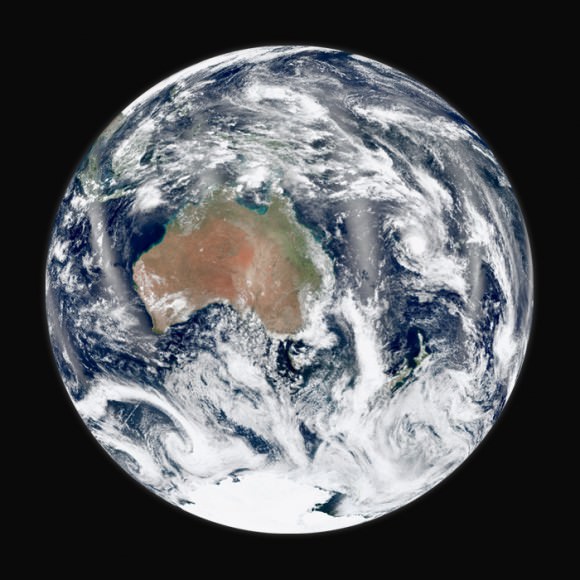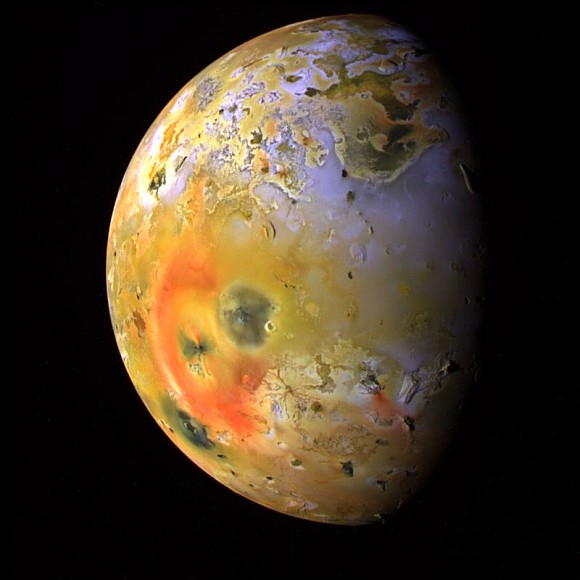Venus and Mars may be all right tonight, but there’s still a lot we don’t understand about these planets. Why does one, Venus, have such a thick atmosphere? Why is that of Mars so thin? And why is Earth’s atmosphere so different again from what we see on Venus and Mars?
A new JAXA (Japan Aerospace Exploration Agency) satellite aims to better understand what’s going on. It’s called SPRINT-A, for Spectroscopic Planet Observatory for Recognition of Interaction of Atmosphere.
JAXA has set an official launch date of Aug. 22 from the Uchinoura Space Center, although the window extends as far as Sept. 30. (Launches can be delayed due to weather and mechanical difficulties.) The satellite’s expected Earth orbit will range from 590 to 715 miles (950 to 1150 kilometers) above the planet.
“Venus and Earth may be called twin planets, and it recently becomes clear that three terrestrial planets in the solar system – including Mars – have very similar environments in the beginning era of the solar system,” JAXA stated in a press release.

The agency pointed out, however, that these three planets ended up with different fates. Venus has a runaway greenhouse effect on its planet, with surface temperatures reaching a scorching 752 degrees Fahrenheit (400 degrees Celsius). Mars, on the other hand, has a very thin atmosphere and more variable temperatures that can get a little chilly.
Understanding how atmospheres escape into outer space is the main goal of SPRINT-A. The sun, the scientists stated, had more intense activity in the past than what we see presently, which could have blown away the atmosphere on some terrestrial planets.
“The study on interaction of the strong solar wind on the atmosphere of the planet leads to acquiring knowledge of history in the early stage of the solar system,” JAXA stated.
Besides looking at the inner solar system, SPRINT-A will investigate a phenomenon related to a splotchy volcanic moon orbiting the planet Jupiter.

SPRINT-A aims to better understand a ring of material surrounding Jupiter that came from Io.
Electrons and ions from the volcanic moon surround Jupiter and, as they collide, produce ultraviolet light in a process similar to what causes auroras in the upper atmosphere of Earth and other planets. How this happens is still being figured out, though.
It’s a pretty radiation-heavy environment in that region of the solar system. The spacecraft Galileo safely orbited the Jovian moons for years, but humans would have a little more trouble surviving the radiation without heavy shielding and careful precautions.
Check out more information about SPRINT-A on JAXA’s website. Japan also recently announced it will launch the Kounotori 4 cargo spacecraft to the International Space Station in August, likely Aug. 4.


The Transitional Matter given off by the sun is transformed into different elements as it gets farther away from it’s source. This is due to the Transitional Matter’s energy level becoming lower as it travels through the solar system. That’s why planets closest to the sun are made of heavier elements then the outer gas giants. The Transitional Matter that gets absorbed by our Earth is what causes the Northern Lights.
What a lot of BS.
Thought the preponderence of metals in planets closer to the sun and of volatiles further out was due at least in part to the higher temperatures closer to the sun. Also, the greater masses of the 4 known outer planets are better able to retain lighter constituents. HWL makes some remarkable speculations that demand remarkable evidence. Am only a dilettante of astronomy with a B.S. in biology, but am aware of no evidence that indicates elements behave in the way described above. Have taken 5 semesters of chemistry and 3 of physics at the university level.